|
The Commedia dell’Arte was the theatre of the mask. The entire essence of the tradition, born in Renaissance Italy, was founded on the concept of stylized illusion. It is a folk art which draws amply from life, welding together direct observation with profound humanism. The device largely responsible for this artistic union is the mask that allowed the artist to present reality as he saw it behind the guise of conventionalized dramatic illusion.
One of the most celebrated practitioners of the Commedia,
Carlo Gozzi (1720-1806)
literally used masks in
his work and fashioned his
characters in the
conventional mode of
traditional stereotypical
roles – Pantalone,
Brighella, Arlecchino, the
Innamorati.
But his contemporary and
rival, Carlo Goldoni
(1707 -1793), while
he was also deeply
influenced by the Commedia tradition, took the bold step of abolishing the physical mask in his plays. With Goldoni a new form of Italian comedy is born. His art is subjective rather than symbolic; it turns away from exterior concerns toward the complexity of human existence.
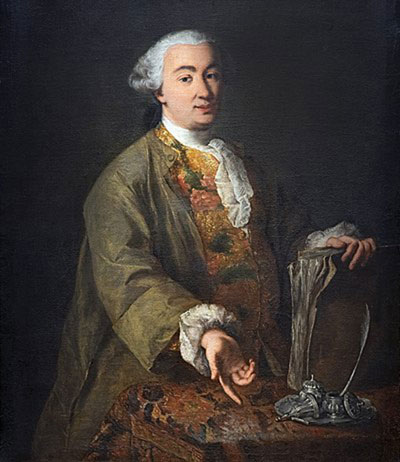
Goldoni believed the mask hindered the actors from delving into the
psychology of a character; it created a barrier between actor and
audience. Unlike the earliest Commedia plays, Goldoni abandoned all
improvisation, scripted the stage business and text, and relied mostly
on prose rather than the affected and heightened poetics of Gozzi.
Moreover, he sought to add to the physical comedy of the Commedia
tradition, a layer of comedy of manners; Goldoni’s work explores
human nature in all its foibles and holds a glass to social behavior.
The direction that Goldoni’s work took was bolstered by the
transformation writers like Moliere (1622-1673) had wrought on the
imported Commedia dell’Arte. From Moliere’s work Goldoni gleaned
wit, tenderness, compassion, and he imbued his plays with an intimacy
and connection between actor and audience that have made them
timeless.
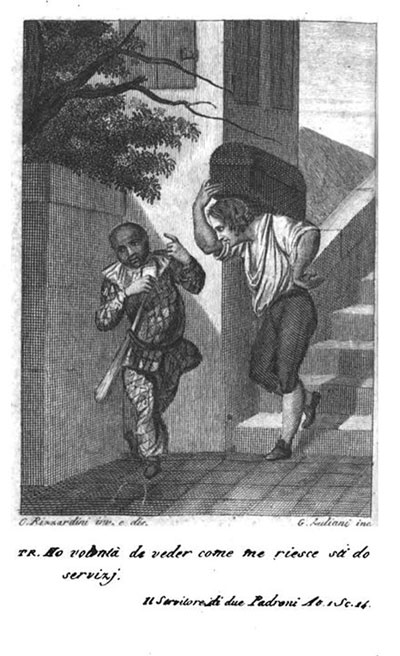
Goldoni’s most famous work remains The Servant of Two Masters,
though this is one of his earliest and actually most conventional plays.
It makes use of all the traditional Commedia characters as well as the
devices of mistaken identity, thwarted romance, and a wily servant. It
is classic, quintessential farce relying on the high-energy performance
of its protagonist, Truffaldino. But the attention and insight Goldoni
lavished on Truffaldino elevates this character, even in this early play,
to a multi-dimensional role. Truffaldino is interesting to modern
audiences not only because he creates the bungling intricacies of the
plot, but also because he is an individual who intrigues us because we
share his actions AND his feelings. Truffaldino is a delightful rogue –
amorous, self-interested, grasping, scheming, hungry, and fiercely
clever. He invites audience identification and empathy; his boldness,
his unabashed plebian spirit, and good-humored errors endear him to
the audience. Truffaldino stands head and shoulders above the rest of
the cast in that he is the first of Goldoni’s long line of personages who
emerges from behind the mask – literally and figuratively.
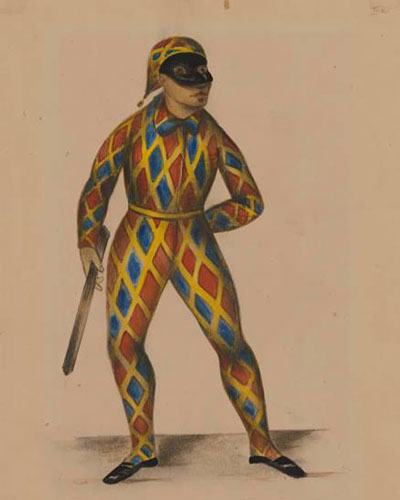
Though almost four hundred years old, The Servant of Two Masters
remains an icon of classical theatre, receiving countless productions
through the centuries and being adapted into modern retellings. One
such lively and captivating version is Richard Bean’s 2012 play, One
Man Two Guvnors, which sets the tale in Brighton, England, in the
1960s. A recent production staged by Portland’s Good Theater is a side
-splittingly funny, perfectly timed farce that honors the work’s ancient
roots in Italy’s Commedia dell’Arte. Bean reveals the enduring
universality of Goldoni’s characters and the predicable, but perfect,
recipe for comedy. The Good Theater’s production, though small in
scale, is large in impact, delivering an evening of hearty laughter and
impeccable comedic technique by the eleven-member cast, led by the
irrepressible Dustin Tucker in a role which he was born to play.
Playwright Bean’s script follows Goldoni’s scenario about a hapless
servant who hires himself out to two masters in an effort to assuage his
hunger and make ends meet. However, he must also make certain
neither employer learns of the other, and he spends the better part of
the play’s two plus hours devising a harrowing a list of schemes to
make his plan work. In the process, he becomes involved in his
“guvnors’” complicated lives, is forced to play two characters, himself,
and has his wits and energy sorely tested in a series of madcap, near
-miss scenes. In classic Commedia fashion, all is happily resolved and
revealed in the closing moments of the play, as the entire cast launches
into the song/dance celebration, Gary Olding/Richard Bean’s
“Tomorrow Looks Good from Here.”
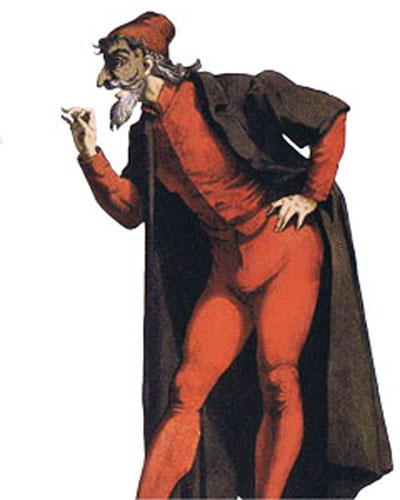
Both the Commedia original characters and Bean’s are stereotypes
with prescribed roles in the comedy, and Bean’s superimposing onto
the originals a cast of mobster families in 1960s Brighton, while staying
true to the essence of the genre, works with sassy contemporary
charm.
Sally Wood directs with a sure hand for pacing and a flair for the
physical comedy this play upon which relies so heavily. She keeps the
kinetic flow going at a madcap pace and encourages, especially for the
protagonist, Francis Henshall, the kind of improvisation inherent in
the genre.
Despite the confines of the small stage at the Good Theater, set
designers Steve Underwood and Tracy Washburn (Props Meg
Anderson) manage to create an attractive, minimalistic set that serves
as multiple locales with some simple changes. Colorful, slightly two
-dimensional, the décor has the feeling of a children’s storybook,
adding to the improbable magic of the piece. Ian Odlin’s lighting
reinforces the effect, while Michelle Handley’s costumes capture the
period. The uncredited sound design with a series of tracks from the
1960s is delightfully atmospheric. Technical Director Craig Robinson
Stage Manager Michael Lynch keep the tricky timing of the show
running perfectly.
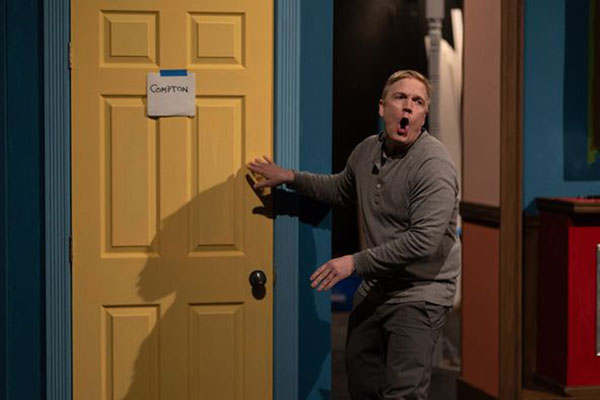
The eleven-member cast is comprised of quite a few actors making
their Good Theater debut, as well as Good veterans. As an ensemble,
they do a credible job of the working-class British accents and
demonstrate an affinity for the style of the piece. Paul Haley is
appropriately pompous and bombastic as the attorney Harry Dangle,
while Mark Rubin is all gangster toughness as Charlie “the Duck”
Clench. Morgan Amelia Fanning makes Pauline Clench a delightfully
dim ingenue with a vacuous gaze, piping voice, and flouncing blonde
wig. As her suitor Alan Dangle, Pierce Ducker creates the perfect
parody of a self-declared poet and actor, turning his scenes into comic
melodrama. As the second pair of star-crossed lovers, Heather Irish
camps prettily Crabbe impersonating her supposedly dead brother,
while Nathaniel Stephenson plays her lover, Stanley Stubbins as a
clueless, spoiled, self-satisfied gentleman. As other servants and
retainers, Ashanti Williams (Lloyd Boateng), Daniel Cuff (Gareth), and
Ethan Rhoad (Alfie) contribute amusingly to the general mayhem. On
the evening I attended due to the illness of Molly Bryant Roberts, the
role of Dolly, Henshall eventual love interest, was taken over by
Director Sally Wood, who heroically kept the evening going while
discreetly referring to a small script.
But as the title of the play suggests, there is one man – and one actor –
at the heart of the action. Dustin Tucker, well known for his talent at
playing multiple characters in a single show and creating brilliant one
-man shows, is nothing short of dazzling as Francis Henshall (and his
various identities like Paddy). At once impish, winsome, endearing
and then scheming, manipulative, opportunistic, Tucker is the perfect
Harlequin figure at the center of this Commedia script. A bundle of
seemingly inexhaustible energy, he is a master of the physical comedy
the play demands, at the same time, that he is skilled at the verbal
intricacies and tongue twisters that punctuate the dialogue – not to
mention the note-perfect use of accents. And, most of all, he is an
accomplished improviser – riffing deliciously on Goldoni’s script and
stage business – devising physical and verbal business that convulses
the audience in laughter. The eating scene in which Henshall attempts
to serve both masters an elaborate dinner, while stealing some for
himself is pure revolving door farce capped by an hilarious exchange
with an audience member.
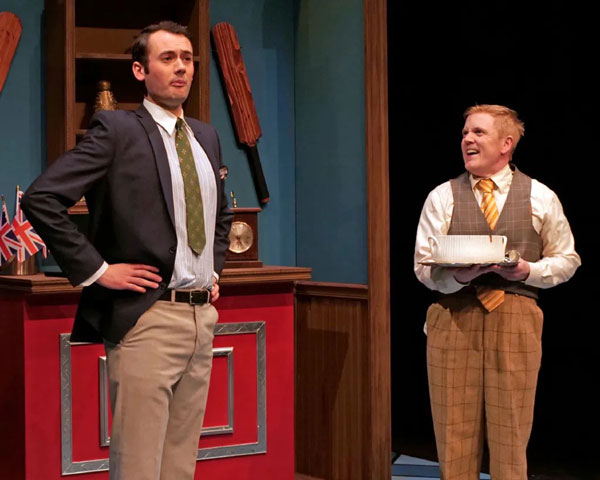
In the final scene when convention requires for the farce to unravel,
the pairs of characters to be matched, and a happy ending to ensue, One Man Two Guvnors ends, as would the 18th century Goldoni play,
with a song and dance by the ensemble. This time the number is an
original composition (Bean/Olding), “Tomorrow Looks Good From
Here,” and the sheer exuberance of the cast, as they each get a chance
at the mic and dance with glee, signals the joy created by the evening.
This is comedy at its most predictable, its most carefully regulated by
convention and rules, and yet, because of the stunning dramatic and
improvisational talents of the performers, and because of the
presciently modern gift of the play’s inspiration – Goldoni -
predictability seems to be upended in a breathlessly delightful journey
toward a new shared experience between actors and audience. This
very ancient story is fresh and vibrant once again. The mask is lifted,
and the comedy speaks its timelessness.
|